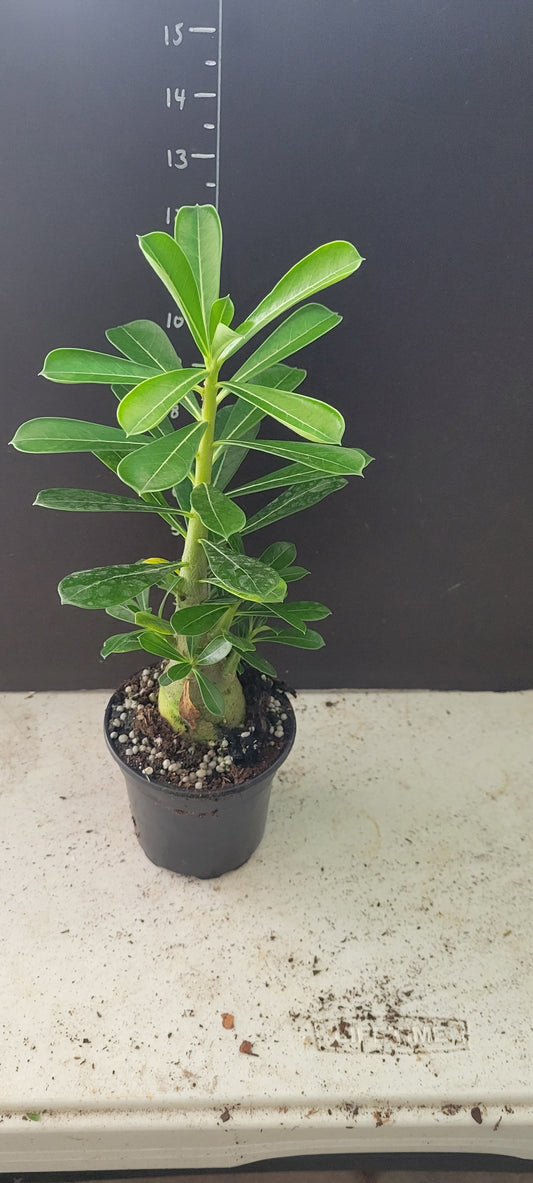Collection: Adenium Obesum
The desert rose plant, scientifically known as Adenium obesum, is a visually striking and unique succulent shrub or small tree that is cherished by plant enthusiasts for its exotic appearance and vibrant flowers. Here is a more detailed overview of this fascinating plant:
**Appearance**:
Desert rose plants are characterized by their thick, swollen base, known as a caudex, which stores water to help the plant survive in its native arid environments. The caudex can develop intricate patterns and textures over time, adding to the plant's aesthetic appeal. The plant's dark green, glossy leaves are arranged in clusters at the tips of its branches, providing a beautiful backdrop for its spectacular flowers. The trumpet-shaped flowers of the desert rose come in a variety of colors, including shades of pink, red, white, and purple, adding a splash of color to any garden or indoor space.
**Habitat**:
Native to arid regions of Africa and the Arabian Peninsula, desert rose plants are well-adapted to hot, dry climates with plenty of sunlight. In their natural habitat, they can be found growing in sandy or rocky soils with excellent drainage. These plants are drought-tolerant and do best in conditions that mimic their native environment.
**Care**:
Proper care is essential for the health and well-being of desert rose plants. They require plenty of sunlight to thrive and should be placed in a sunny location, such as a south-facing window or outdoors in a sunny spot. Desert rose plants are sensitive to overwatering, so it's crucial to let the soil dry out between waterings to prevent root rot. A well-draining soil mix specifically designed for succulents is recommended for optimal growth.
**Propagation**:
Desert rose plants can be propagated from seeds or stem cuttings. Seeds can be collected from the plant's seed pods and sown in a well-draining potting mix. Stem cuttings can be taken from healthy branches, allowed to dry for a few days to form calluses, and then planted in a suitable growing medium.
**Pests and Diseases**:
Like any plant, desert rose plants are susceptible to pests and diseases. Common pests that may affect desert rose plants include spider mites, aphids, and mealybugs. Regular inspection and prompt treatment can help prevent pest infestations. Overwatering can lead to root rot and other fungal diseases, so it's important to water these plants sparingly and provide good air circulation around the plant.
**Pruning**:
Pruning is essential for maintaining the health and shape of desert rose plants. Regular pruning can help remove dead or damaged branches, promote new growth, and maintain an attractive form. Pruning should be done with clean, sharp tools to prevent damage to the plant.
In conclusion, the desert rose plant is a captivating and low-maintenance addition to any plant collection. With the right care and attention to its specific needs, this unique succulent can thrive and reward you with its stunning flowers and distinctive appearance. Whether grown indoors or outdoors, the desert rose is sure to be a conversation piece and a source of joy for any plant enthusiast.
-
Pink Desert Rose in four inch pot.
Regular price $12.00 USDRegular priceUnit price / per
